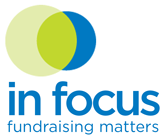Recent Posts
- The Secret Sauce: Strategies & Tactics to Engage Institutional Funders
- What Are Your Donors Saying When They Go Quiet? And How Should You Respond?
- Maximizing Year-End Giving: Strategies for a Successful Fundraising Campaign
- Navigating 2024’s Unique Year-End Fundraising Landscape
- Latest Giving USA Data
- How to Flex Your Case for Support to Raise More Money
- Maximizing Potential of Donor-Advised Funds: Strategies You Need To Know
- Major Donors: Cultivating Relationships & Forging Strong Ties
Navigating Year-End
By: Nadine Gabai-Botero, CFRE, President
October 31, 2021
Recently, I joined a Catalogue for Philanthropy panel on “Prepping for Year-End” and the discussion and questions inspired me to share points we went over on best practices and what to expect this year. Click here to watch the session or read on for details on what we covered (there’s so much to go over I’m breaking this info up into two posts so stay tuned for more soon!)
You may remember that a few months ago I posted on year-end planning. Hopefully, your year-end prep is in motion and humming along. If not, don’t worry, there’s still time….but not much! Below are elements to consider as you plan and draft. Take a look and if you have a specific question or want to share what you’re doing differently this year, send me an email!
Connect with Donors at Year-End
What’s your message?
There were many questions on the importance of content. Year-end is a time to inspire your donors and connect with them through stories describing your impact. Think about what emotions you want your donors and prospects to feel as they read your letter and emails.
Use images, quotes, and details to make your stories come alive. This is not the time for general operating / kitchen-sink descriptions on the work you’re doing. Focus on where you made a difference this past year and show your donors how they helped make change happen.
How do you recommend differentiating messaging for GivingTuesday versus end of year? I like to think of year-end as telling a narrow story about your work in many ways. For Giving Tuesday, share an aspect of your work such as stories about the people you’ve served, how you’ve expanded a service area and the impact you’ve had, etc. For the rest of the month, expand on that through more stories, images and quotes, and highlight what donations will help you do in 2022.
Given that we are in year two of the pandemic, what should the tone look like in those messages? Now is not the time for doom and gloom or panic. Stay positive! That said, you should describe current and upcoming challenges in a way that shows why support is needed now. You’ve made it this far in part because of your donors, so make sure to include them in your appeals by using “you” a lot and referencing their role in your work.
To mail or not to mail?
My answer is always yes, at least to your major donors. Go big if you have the budget and a solid mailing list, but at the very least, craft a letter to share what you’ve accomplished and ask for support.
How many letters should I send? Your mailing may be to 200 names, or it may be 2,000 or 20,000+ depending on your nonprofit and your list size. No matter the number, make sure you share what’s been working and info on your programs/services, where you have challenges, and what’s needed to make sure you have an even greater impact next year.
Should I always ask at this time of year? Many nonprofits send an ask no matter when a donor last gave, but if someone just donated in the previous couple of months (Sept/Oct) you may want to suppress the ask and instead send a tailored thank you letter.
What’s the right length for the letter? Some fundraisers insist on “one-page-only” for the length, but I’m not in that camp. But, you should be able to put a compelling message together in two-pages. Remember to use bold text and underline thoughtfully, and keep your paragraphs very short (i.e. 2-3 sentences max)!
It seems that most donors give via email. Why should I bother with a letter and pay postage? It’s true that it may seem like more gifts come in online, but what’s often not clear is the role your letter played in the decision to give. Often a donor receives a letter and has it on his/her desk as a reminder to give, and when the time comes, they do so online.
One growing trend is to include a QR code on the letter, to make it easier for donors to get to your donate page and you can track who is giving from the letter. (After more than a year of accessing menus via QR codes, folks seem quite comfortable with the technology). There are a number of sites to create free codes, including this one.
Who should sign the letter? Typically the CEO or Executive Director signs the letter, but consider bringing other voices to year-end by having emails come from program staff or constituents who have benefited from your services.
Got a match?
If you can secure a challenge gift to use at year-end, do it. Studies have shown that a challenge can influence donors to give. It can also lead to greater engagement by board members who want to make sure you reach your goal.
Who is the best prospect for a match solicitation? Reaching out to a few of your major and most committed donors to ask them to support your year-end effort through a match can be a great way to engage them. Your match could be from just one donor, or made up of a few gifts that you’ve put together into a larger match. You should also consider having a match just for Giving Tuesday, and another for giving in December that goes through the 31st.
There’s so much more to cover on year-end! I’ll share another post soon. Please do share your questions with me or let me know how your year-end planning and writing is going!


Pingback: More on Year-End: Outreach, the Wonders of the Phone, and “Stewardship January”! - Focus Fundraising